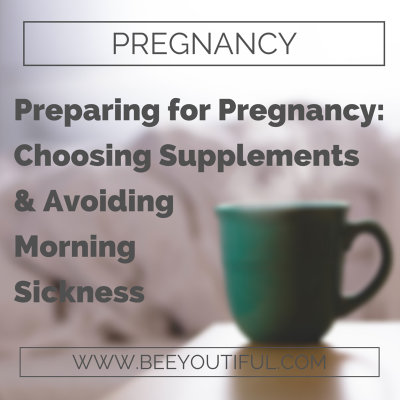Red Raspberry Leaf: A “Miracle Herb” for Women

This information originally appeared in a slightly different format in our Winter 2007-2008 Catalog.
My greatest passion in life is experiencing the birth of a child with parents who love children as much as I do. As a Licensed Midwife, it has been my privilege to advise many women during pregnancy, and to be present at thousands of births. I take it upon myself to care for my clients before, during, and after the birth, physically, mentally and emotionally.
 For thousands of years, midwives and Chinese herbalists have used herbs with very good results. This fact is not lost on the current medical community, as many of our allopathic medicines are derived from herbs.
For thousands of years, midwives and Chinese herbalists have used herbs with very good results. This fact is not lost on the current medical community, as many of our allopathic medicines are derived from herbs.
As a midwife and herbalist, I use herbs constantly in my practice. I have found that certain herbs contribute significant amounts of nourishment necessary to our bodies. I believe that the female body was designed to give birth, and that with proper nutrition, it can usually do what it knows how to do, without much intervention.
I had one client who was worried about having her fifth baby. After a few prenatal visits, I was puzzled about her concern. I was thinking, “Fifth baby, what could she be worried about?” After some coaxing, she finally admitted that it was the after pains that had her concerned about her birth. Apparently the after pains were so incredibly intense after her fourth baby that she was not at all concerned about the act of actually giving birth to number 5, but was fearful instead about the pains to come later.
Now that I knew what was troubling her, I suggested that she increase her intake of Red Raspberry Leaf. She was skeptical that this would help, but was willing to give it a try. I advise all of my clients to take Red Raspberry Leaf through pregnancy, and I explained to her why.
The Woman’s Herb
Red Raspberry Leaf (Rubus idaeus) is a widely used herbal tonic that is especially beneficial during pregnancy. Brewed as a tea, taken in capsule form, or as an infusion, Red Raspberry Leaf is one of the safest and most commonly used tonic herbs for women wanting to get pregnant or for women who are already pregnant.
Taking this herb helps facilitate all the functions our bodies do for us on a daily basis. This is why Red Raspberry Leaf is considered a ‘tonic’ herb; it tones and supports the body in general. Red Raspberry Leaf tones the uterus, improves the quality of labor contractions, improves quality of sleep, decreases feelings of anxiety and nervousness, and decreases constipation.
It also contains the most easily assimilated form of calcium. Because Red Raspberry Leaf has calcium that is so readily available to our bodies, and most of us have a calcium deficiency, many people notice a change in how they feel right away. Since osteoporosis is related to a lack of calcium, daily use of Red Raspberry Leaf is highly recommended for all women.
Beeyoutiful’s encapsulated organic Red Raspberry Leaf is easily absorbed by the body. All the necessary trace minerals and vitamins your body needs to easily assimilate the calcium are already right there, occurring naturally in the herb itself. Almost every trace mineral that our bodies use is available in Red Raspberry Leaf. This means no one in a lab had to figure out how to formulate something that might work as well as the real thing!
How to Use Red Raspberry Leaf
You can drink 1-6 cups of mild-tasting Red Raspberry Leaf tea per day, hot or iced. Or, you can take one to four capsules per day. Use more in the second half of the day if you tend to have trouble sleeping, since Red Raspberry Leaf encourages a deeper, more restful sleep.
It is almost impossible to overdose on Red Raspberry Leaf, but if you take very large amounts, you may experience either very loose stool or constipation. Either is a sure sign that you have more than reached your body’s threshold for calcium levels. Just back down on your dose by one or two cups of tea or one or two capsules, and your bathroom habits should return to what is familiar to you.
Tea recipe: Pour 1 cup boiling water over 2 teaspoons of dried Red Raspberry Leaf and steep for ten minutes. Steeping longer than ten minutes will only make the tea bitter, not stronger. For stronger tea, use more in the tea bag or tea ball. Sweeten with stevia, honey, or a bit of rapadura.
I like to add Nettles, Alfalfa or Spearmint to my Red Raspberry Leaf tea. This combination makes for a very toning tea. Nettles has every trace mineral our bodies need and helps build up red blood cells as well. Alfalfa helps blood to clot well and prevents unnecessary blood loss. Spearmint is soothing to the stomach and adds a bit of flavor to these herbs for a little more punch to your tea.
Not up for making a tea blend yourself? Try a prepared version of Pregnancy Tea. Or if you’re just not a tea drinker, try Beeyoutiful’s encapsulated organic Red Raspberry Leaf. Try one to six capsules per day, based on comfort and bowel tolerance.
Pregnancy and Red Raspberry Leaf
In addition to many vitamins and minerals, Red Raspberry Leaf also contains an alkaloid called fragrine which lends tone and strength to the uterus. There are several schools of thought on the subject with conflicting information about the use of this herb during pregnancy. (Talk with your care provider about what’s right for your body and pregnancy!)
Many clinicians advise drinking one cup of Red Raspberry Leaf tea per day in the first trimester and 2 cups in the second trimester, then switching to an infusion (a stronger tea) for the third trimester to ensure a strong uterus and prevent miscarriage.
Other clinicians suggest that frequent use (3-4 cups per day of tea, or 1-2 capsules) just during the third trimester is beneficial to the uterine and pelvic muscles.
And finally, some clinicians advise not using Red Raspberry Leaf in the first trimester, particularly if you have a history of miscarriage. Some midwives in the U.K. claim an increase in early miscarriage rates associated with women who have used Red Raspberry Leaf, and it’s been noted that the herb may cause minor spotting in the beginning of a pregnancy.
What Red Raspberry Leaf does not do is start labor or promote contractions. It is not an emmenagogue (something that promotes a miscarriage) or an oxytocic herb (an herb or chemical that promotes uterine contractions). It does strengthen the pelvic and uterine muscles, allowing you to feel healthier throughout your pregnancy, and allowing labor and the muscles involved with birthing to be more relaxed and efficient.
Contact your midwife, herbalist, or physician for personalized input about your use of Red Raspberry Leaf. Do the homework yourself to feel good about your decision to use or not use this herb, and when to use it during pregnancy. This advice is good for any decision you might be facing about your pregnancy options or your own health and welfare in general!
Worries Put To Rest
Well, my anxious client faithfully took the Red Raspberry Leaf in the higher amounts we discussed for her. Her birth experience went so smoothly that I almost missed it! She felt just fine at her 24 hour check up, too, but said that the next day would be the real test to see if the herb had helped. I told her to call me if she experienced any after pains like she had in the past, and then scheduled a routine five-day postpartum check up.
I never received any phone calls from her, and wondered if she was going to tough it out rather than call. That was in my mind as I rang the door bell on the day of my visit, hoping to hear good news, yet fearing I wouldn’t. My face split into a huge grin as my client all but tap-danced to the door to let me in! She couldn’t stop telling me how great the first few days after the birth had been, and how they’d been nothing like her last postpartum experience.
My client was so excited that she wanted me to promise that I would tell every pregnant woman of this “miracle herb” that made all the difference for her. So, this is me keeping my promise and telling all of you this “big secret” to feeling good during and after your births! Red Raspberry Leaf truly is a miracle herb!
Written by Jenny West, LM, CPM, HBCE, TBMP, CST, CH; a midwife/herbalist who has been in practice for 18 years and delivered over 7000 babies.


 Regular chiropractic adjustments made a massive difference. I found an incredible chiropractor (a young dad himself) who was diligent to communicate with my midwife about my specific needs. The results were amazing! I’ve had no backaches since seeing him, no nausea, no swelling or round ligament pain (which plagued me non-stop with my last two pregnancies), and I am much more active.
Regular chiropractic adjustments made a massive difference. I found an incredible chiropractor (a young dad himself) who was diligent to communicate with my midwife about my specific needs. The results were amazing! I’ve had no backaches since seeing him, no nausea, no swelling or round ligament pain (which plagued me non-stop with my last two pregnancies), and I am much more active.

 Both parents should take a multivitamin that’s derived from whole sources, and is easily absorbed to work within the body to help build and restore nutrient reserves.
Both parents should take a multivitamin that’s derived from whole sources, and is easily absorbed to work within the body to help build and restore nutrient reserves.  Heading Off Morning Sickness
Heading Off Morning Sickness
 At the time, I was a practicing registered nurse, and although I did not work in obstetrics, I’d always been fascinated with the subject. Despite the fact that I had scored a perfect 100 ranking among my peers that year in the OB/GYN national competency exams, I gradually found that I actually understood little about the importance of preparing my body to be a mother.
At the time, I was a practicing registered nurse, and although I did not work in obstetrics, I’d always been fascinated with the subject. Despite the fact that I had scored a perfect 100 ranking among my peers that year in the OB/GYN national competency exams, I gradually found that I actually understood little about the importance of preparing my body to be a mother. Our health is a gift, not just from the Creator, but also from our parents. The field of genetics is still full of mystery, but we do know that the health of our parents when they brought us into the world plays a large role in determining what our own level of health will be, and your health will play a major role in your children’s health.
Our health is a gift, not just from the Creator, but also from our parents. The field of genetics is still full of mystery, but we do know that the health of our parents when they brought us into the world plays a large role in determining what our own level of health will be, and your health will play a major role in your children’s health.
 Few things are more uncomfortable and dreaded in pregnancy than heartburn! I made this video when pregnant with our second, and these tips held true for me a year later through our third pregnancy.
Few things are more uncomfortable and dreaded in pregnancy than heartburn! I made this video when pregnant with our second, and these tips held true for me a year later through our third pregnancy.
 It’s an investment in your family’s health.
It’s an investment in your family’s health.  A massage with special floral oils is a comforting treatment during this special time. A spouse or another loving family member or friend can do the honors. Studies have shown that both mothers and babies benefit from regular massage during pregnancy, and massage by the baby’s father contributes substantially to his bonding with mother and baby.
A massage with special floral oils is a comforting treatment during this special time. A spouse or another loving family member or friend can do the honors. Studies have shown that both mothers and babies benefit from regular massage during pregnancy, and massage by the baby’s father contributes substantially to his bonding with mother and baby.
 Ear Ache Remedy
Ear Ache Remedy Hay Fever Blend for Diffusing
Hay Fever Blend for Diffusing